
Evanston is a college town suburb of Chicago. Located in Cook County, Illinois, United States, it is situated on the North Shore along Lake Michigan. Evanston is 12 miles (19 km) north of Downtown Chicago, bordered by Chicago to the south, Skokie to the west, Wilmette to the north, and Lake Michigan to the east. Evanston had a population of 78,110 as of 2020.
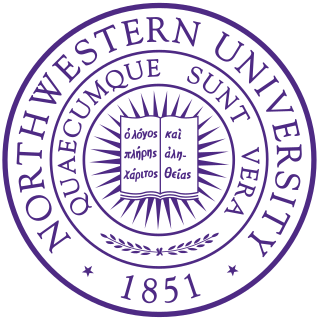
Northwestern University is a private research university in Evanston, Illinois. Founded in 1851, Northwestern is the oldest chartered university in Illinois and is ranked among the most prestigious academic institutions in the world.

Collegiate Gothic is an architectural style subgenre of Gothic Revival architecture, popular in the late-19th and early-20th centuries for college and high school buildings in the United States and Canada, and to a certain extent Europe. A form of historicist architecture, it took its inspiration from English Tudor and Gothic buildings. It has returned in the 21st century in the form of prominent new buildings at schools and universities including Princeton and Yale.

James Gamble Rogers was an American architect. He is best known for his academic commissions at Yale University, Columbia University, Northwestern University, and elsewhere.

The Technological Institute, more commonly known as "Tech", is a landmark building at Northwestern University built from 1940 to 1942. It is the main building for students and faculty in the Robert R. McCormick School of Engineering and Applied Science. The school of engineering itself was called the Technological Institute before a major gift from the Robert R. McCormick Foundation gave it the present name.
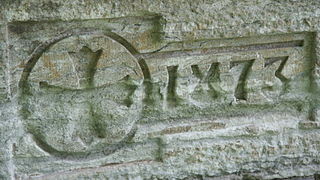
Seabury-Western Theological Seminary (SWTS) was a seminary of the Episcopal Church, located in Evanston, Illinois.

The Rock is a boulder on the campus of Northwestern University in Evanston, Illinois, United States, located in between University Hall and Harris Hall. It serves as a billboard for campus groups and events, and has been painted with different colors and messages over the years.

Myron Hubbard Hunt was an American architect whose numerous projects include many noted landmarks in Southern California and Evanston, Illinois. Hunt was elected a Fellow in the American Institute of Architects in 1908.
The history of Northwestern University can be traced back to a May 31, 1850, meeting of nine prominent Chicago businessmen who shared a desire to establish a university to serve the Northwest Territories. On January 28, 1851, the Illinois General Assembly granted a charter to the Trustees of the North-Western University making it the first recognized university in Illinois. While the original founders were devout Methodists and affiliated the university with Methodist Episcopal Church, they were committed to non-sectarian admissions.

Charles Deering Library, on the campus of Northwestern University in Evanston, Illinois, U.S., was the main library on the Evanston campus from 1933, when it opened, until the construction of the Northwestern University Library in 1970. Deering Library houses the Northwestern University Archives on the first floor, the Music Library on the second floor, the Art Collection and the Special Collections Department on the third floor. The library is named for Charles Deering, a Northwestern benefactor and chairman of International Harvester, who provided the initial financing for the building.

The Dearborn Observatory is an astronomical observatory located on the Evanston campus of Northwestern University. The observatory was originally constructed in 1888, through an agreement between the university and the Chicago Astronomical Society. In the summer of 1939, Dearborn Observatory had to be moved to make way for the construction of the Technological Institute.
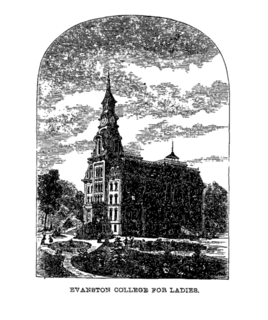
The Evanston College for Ladies was a women's college in Evanston, Illinois between 1871 and 1873. Female students attended classes at Northwestern University, resided at the college, and attended supplemental courses such as fine arts, foreign language, and housekeeping. The mission of the Evanston College for Ladies was to give women access to Northwestern University similar to that which was granted to men. The college was merged with Northwestern University on June 25, 1873.
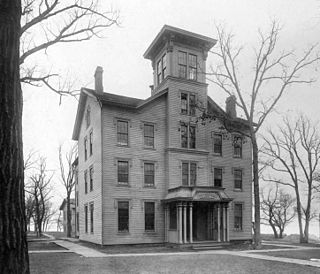
Old College was the first building constructed at Northwestern University in Evanston, Illinois, and was completed in 1855. Although intended to be temporary, it served in various capacities including classrooms, a library, and offices until it was razed after being extensively damaged in 1973.

The Charles Gates Dawes House is a historic house museum at 225 Greenwood Street in Evanston, Illinois. Built in 1894, this Chateauesque lakefront mansion was from 1909 until his death the home of Charles Gates Dawes (1865–1951) and his family. Dawes earned the 1925 Nobel Peace Prize for his plan to alleviate the crushing burden of war reparations Germany was required to pay after World War I. Dawes served as U.S. Vice President under Calvin Coolidge, a general during World War I, and as United States Ambassador to Great Britain. Dawes was a descendant of William Dawes, who along with Paul Revere, rode to alarm the colonists that the British regulars were coming on the night before the Revolutionary War began. The house, a National Historic Landmark, is now owned by the Evanston History Center, which offers tours.
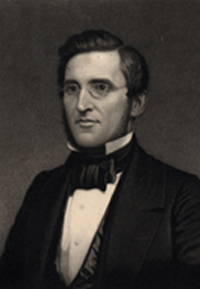
Joseph Cummings was the president of Wesleyan University from 1857 to 1875, president of Northwestern University from 1881 to 1890, and had been president of the predecessor of Syracuse University from 1854 to 1857.
The campus of Northwestern University encompasses two campuses in Evanston, Illinois and Chicago, Illinois, United States. The original Evanston campus has witnessed approximately 150 buildings rise on its 240 acres (0.97 km2) since the first building opened in 1855. The downtown Chicago campus of approximately 25 acres (100,000 m2) is home to the schools of medicine and law was purchased and constructed in the 1920s and 1930s.
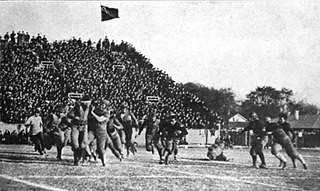
Northwestern Field was a football stadium in Evanston, Illinois. It opened in 1905 and was home to the Northwestern Wildcats football team prior to the Dyche Stadium opening in 1926. It had a capacity of 10,000 people. Northwestern Field was located on Central Ave, seventy-five feet east of the current stadium.
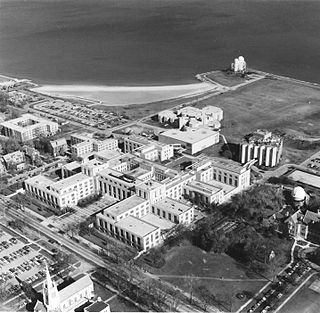
The Northwestern University Lakefill is a large area of Northwestern University land that was reclaimed from Lake Michigan in 1962–1964 by creating a seawall of limestone blocks quarried in Illinois and Indiana and using landfill materials from the construction of the Port of Indiana. The lakefill resulted from the university's need to expand the campus's physical footprint; Northwestern President J. Roscoe Miller received permission from the town of Evanston and the Illinois legislature to reclaim 74 acres of underwater land. This almost doubled the size of the previously 85 acres campus. In 1968, the lakefill was expanded by an additional 10 acres on the southern end of the campus.
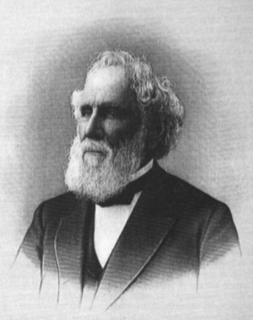
Orrington Lunt (1815–1897) was one of the founders of Northwestern University, Illinois, United States, and was known as the "father of Evanston" or the "discoverer of Evanston". He was also actively involved with the Garrett Biblical Institute and the Methodist Church.




















